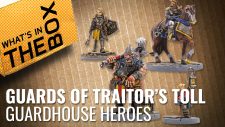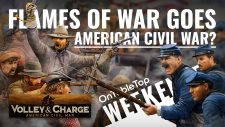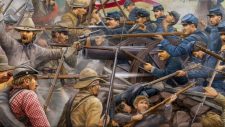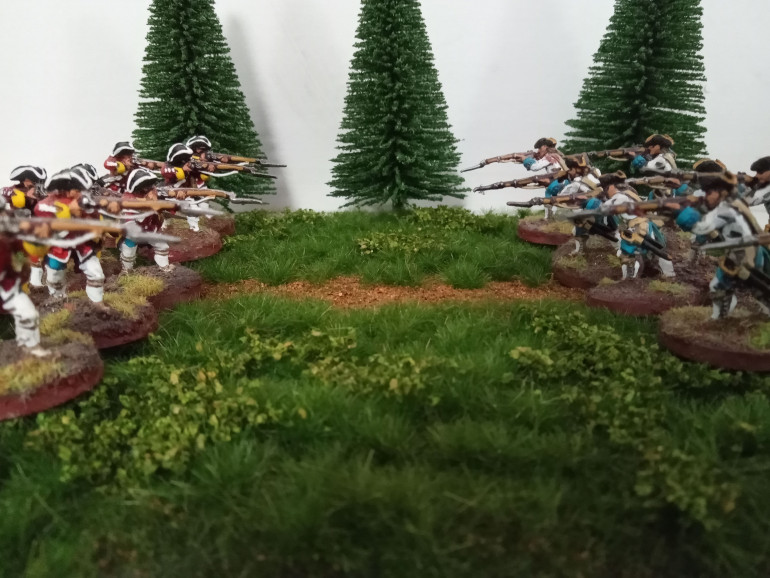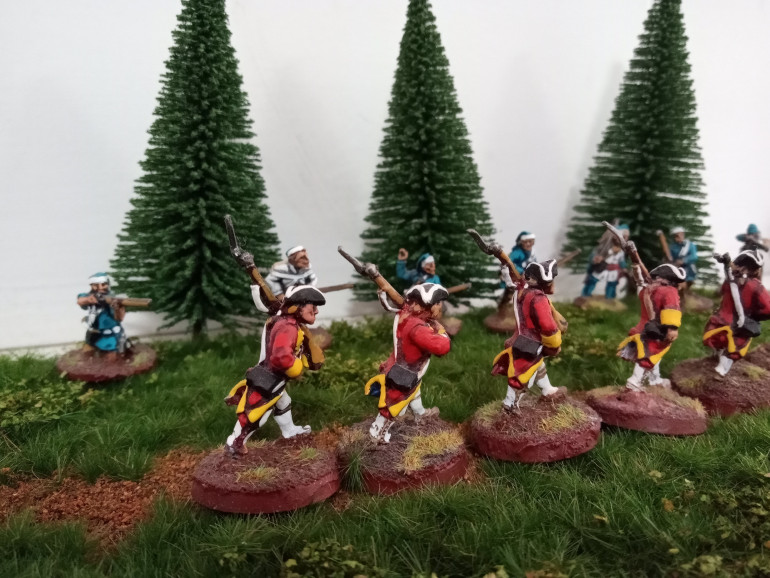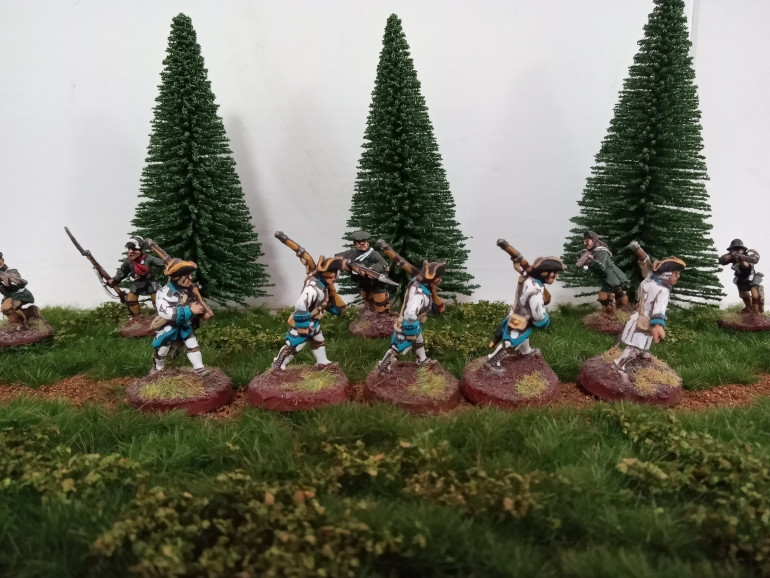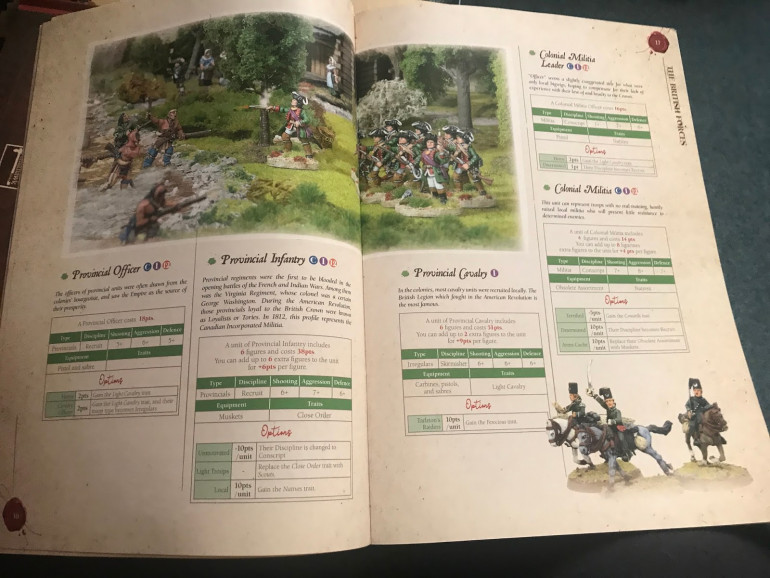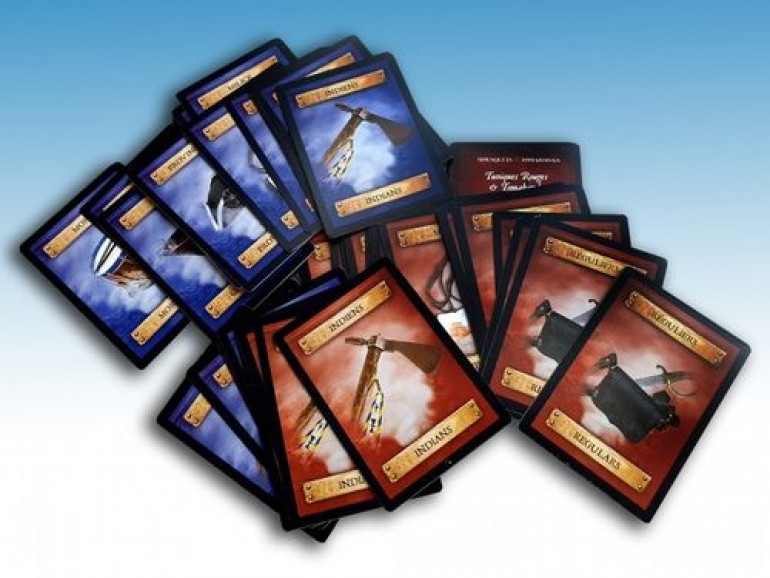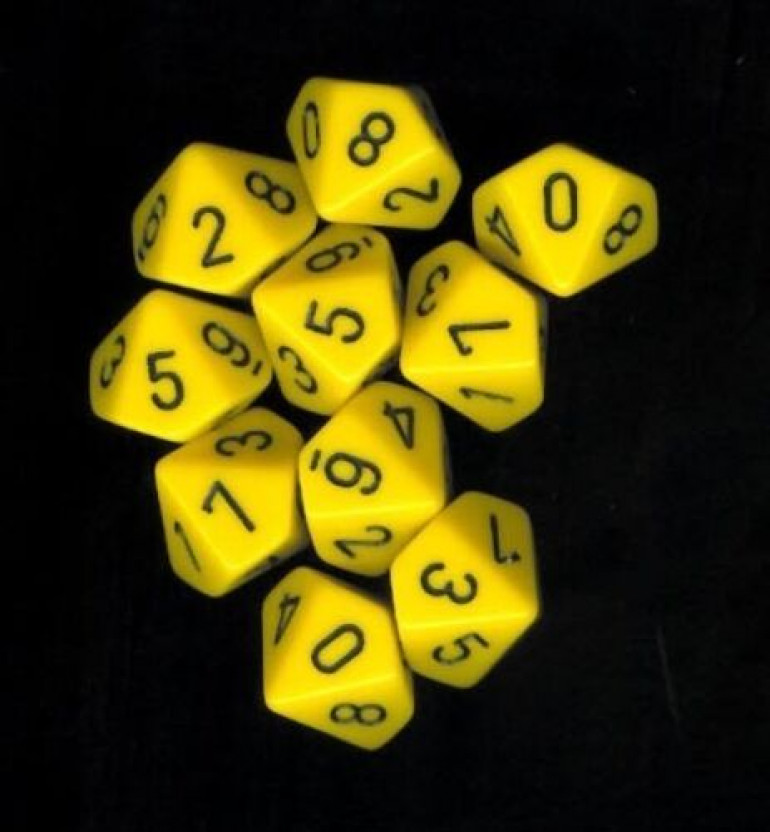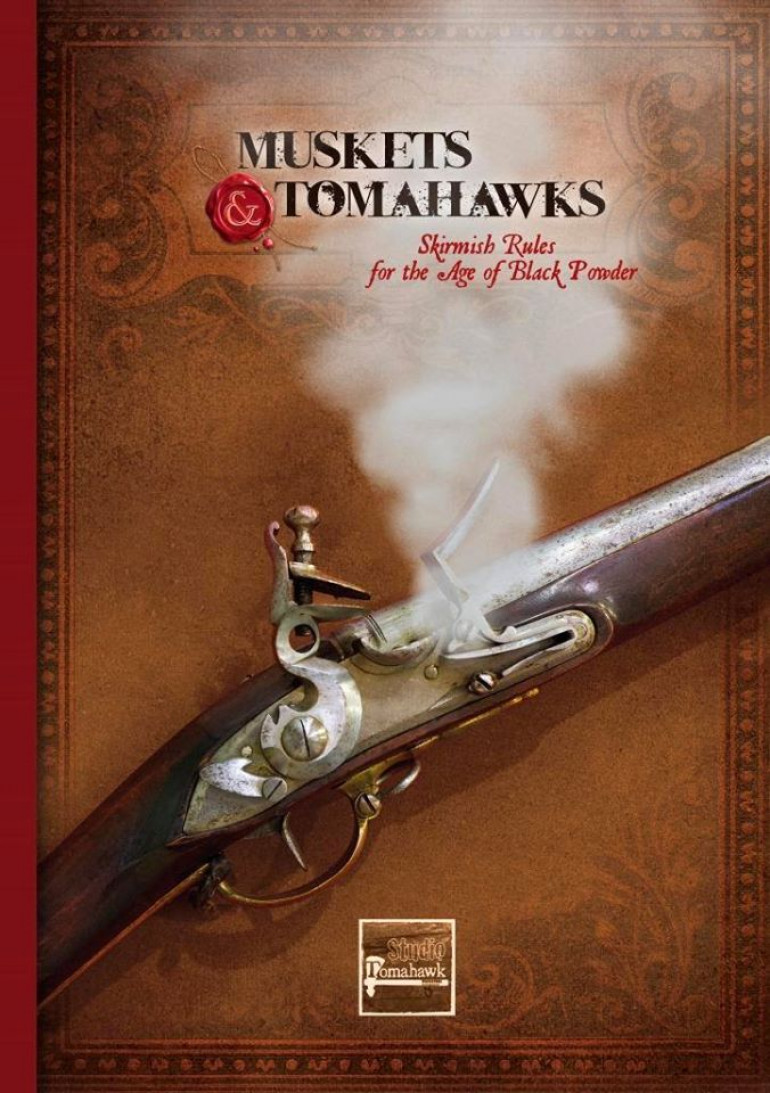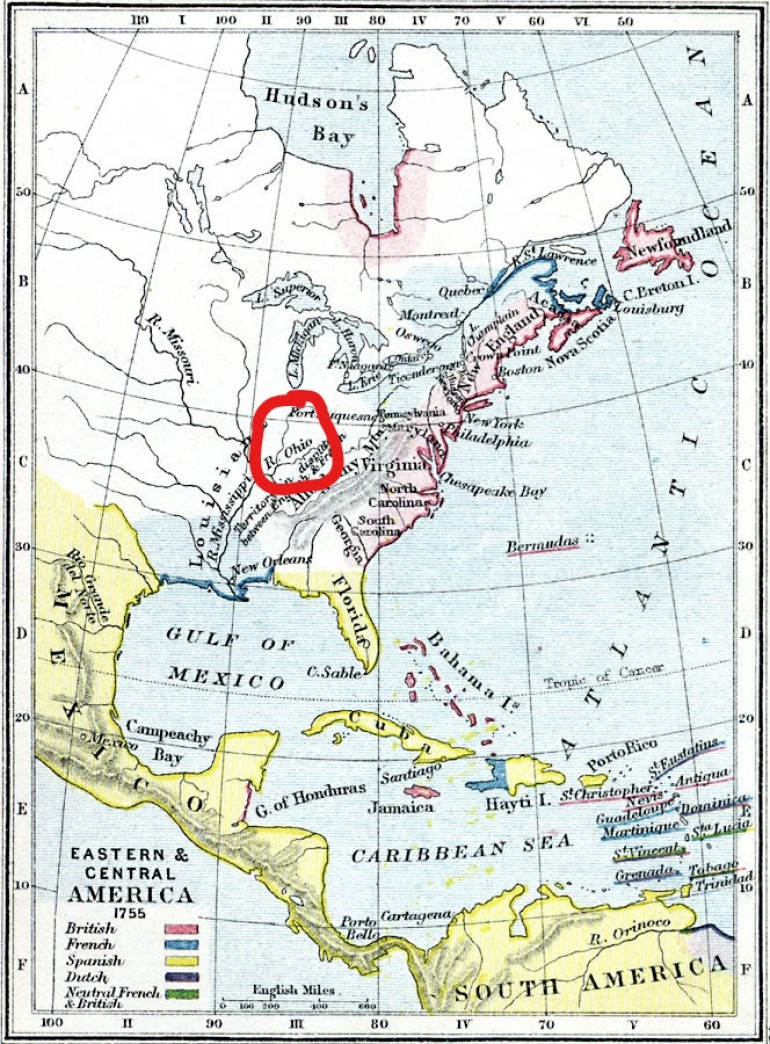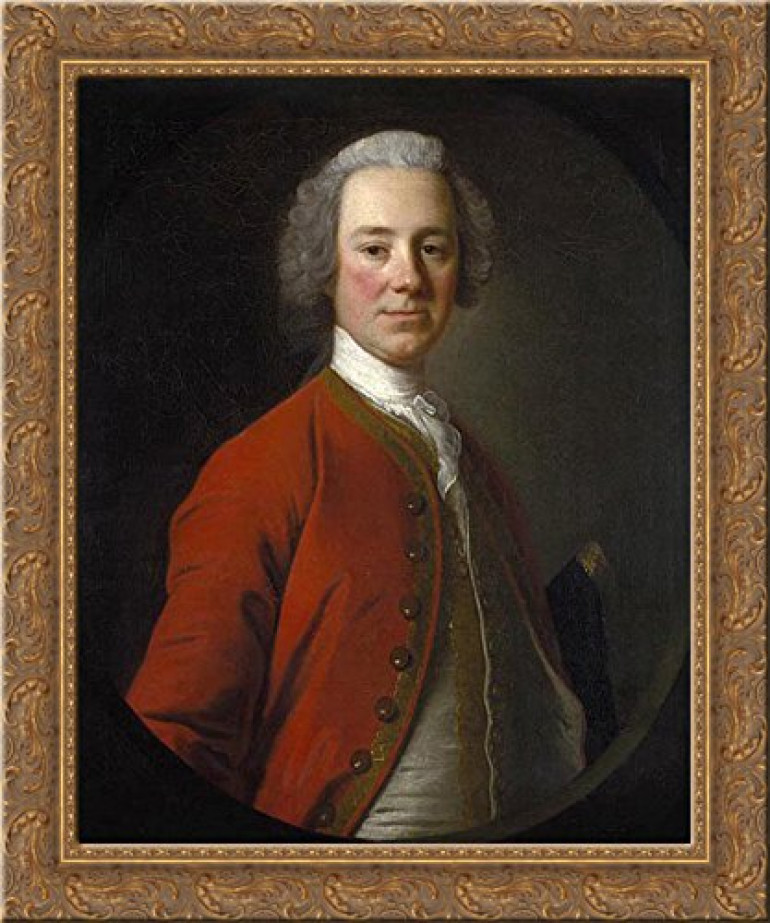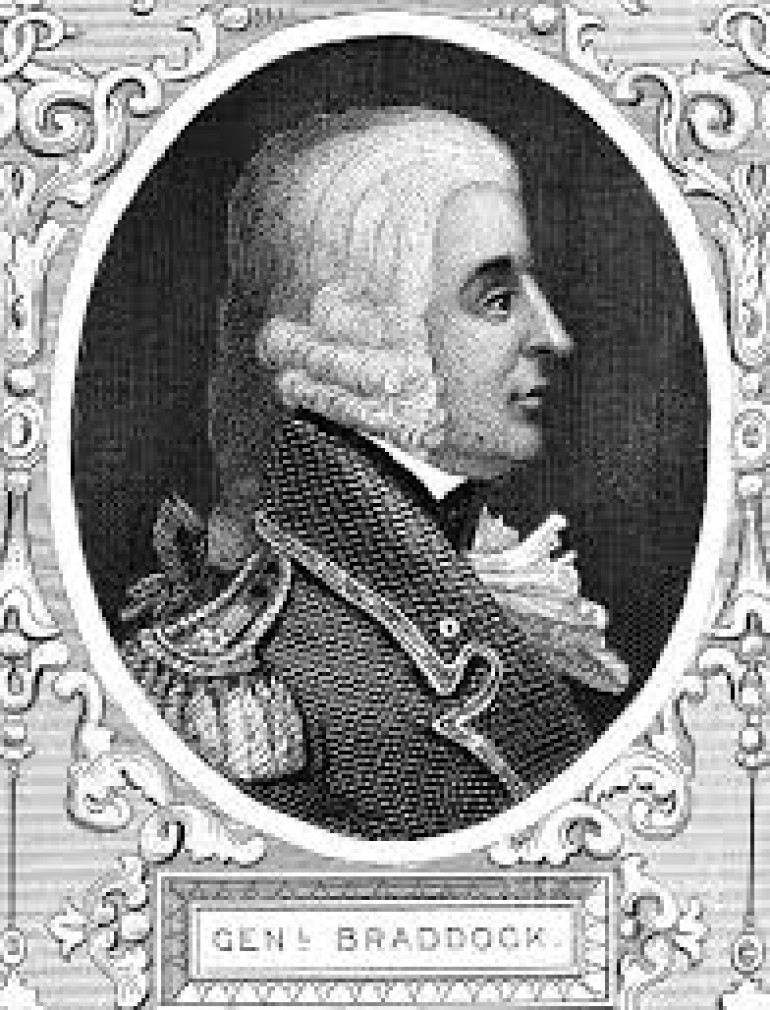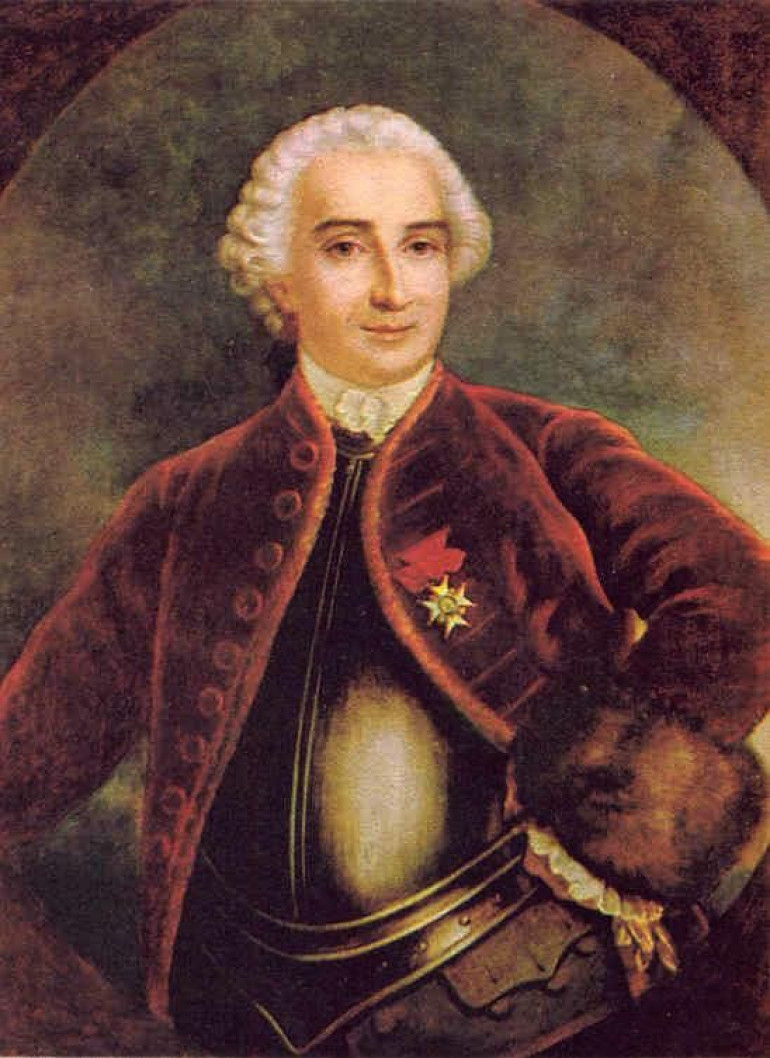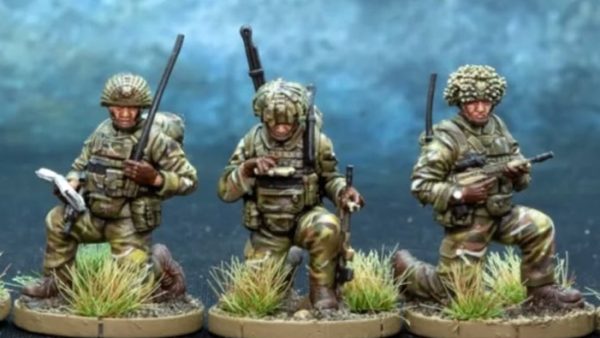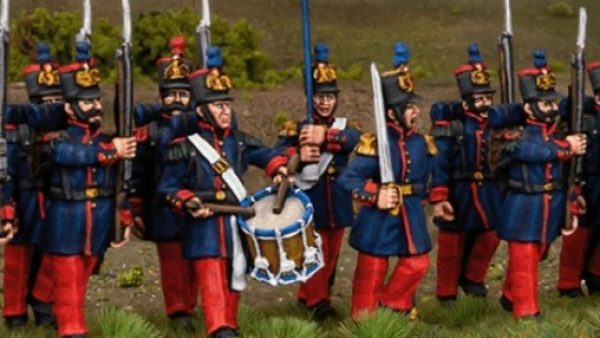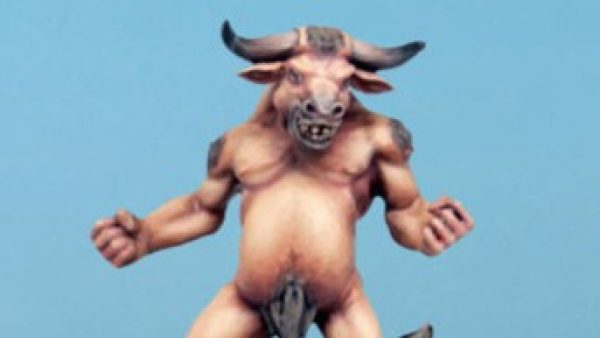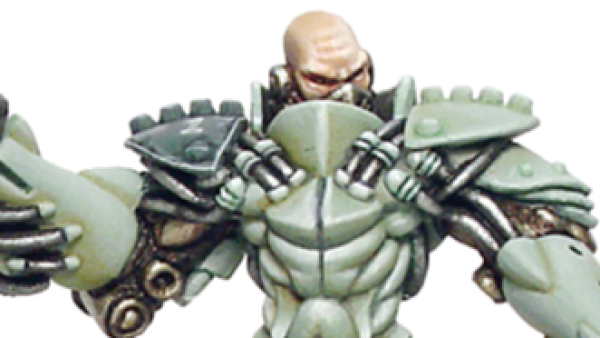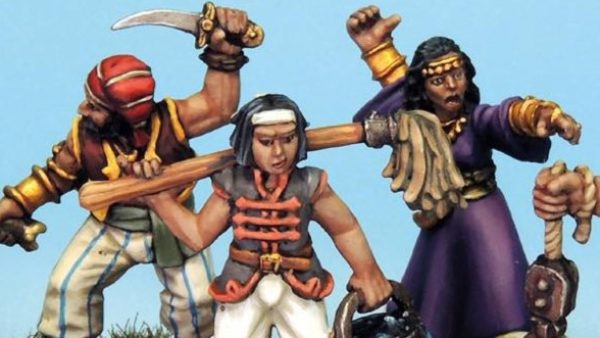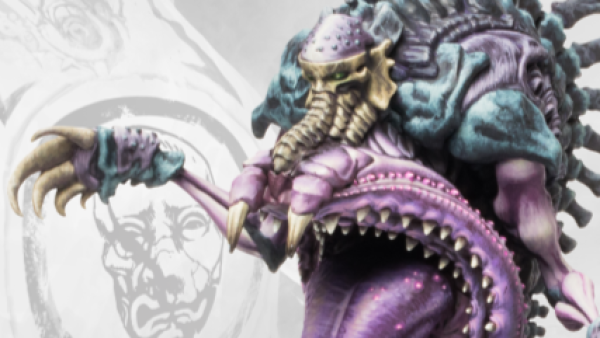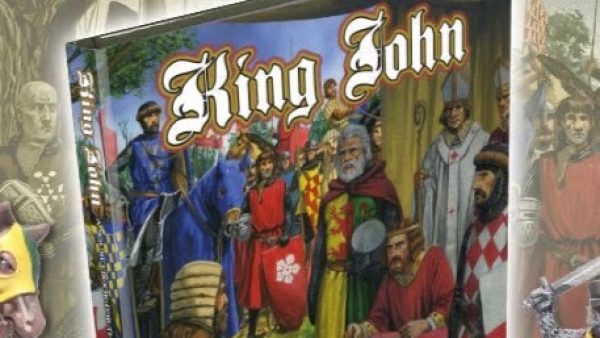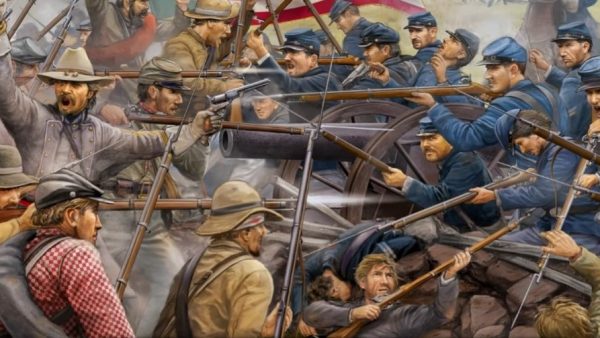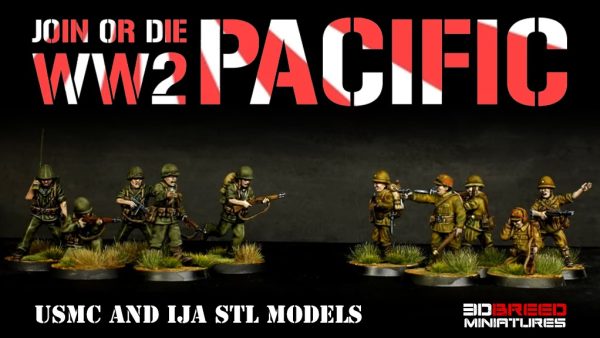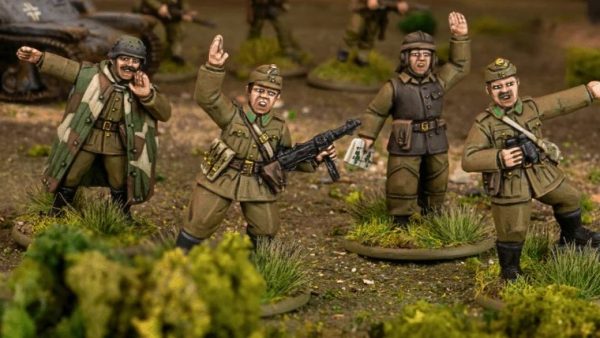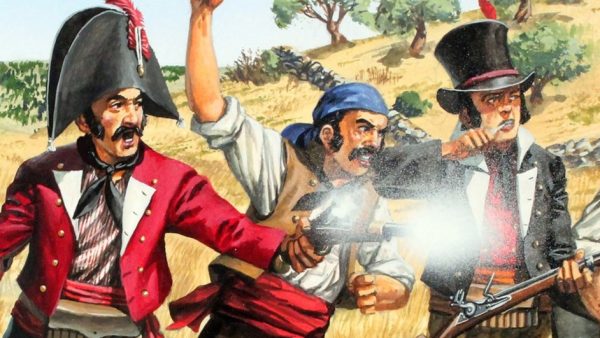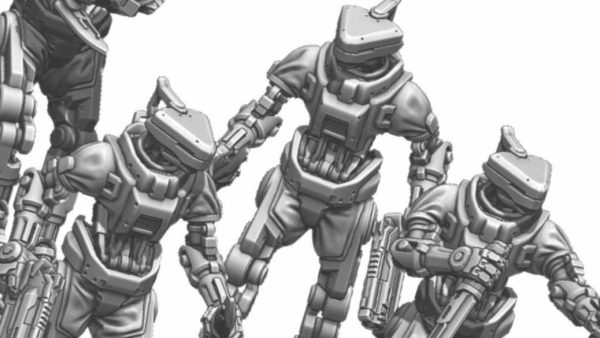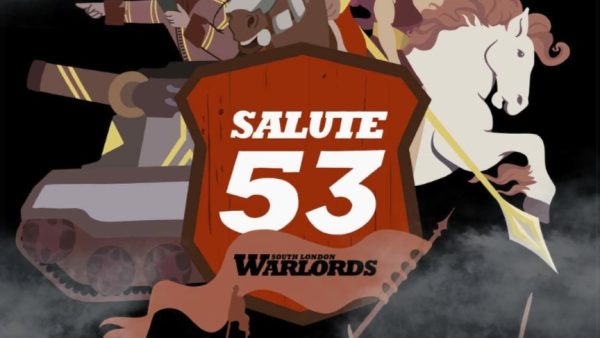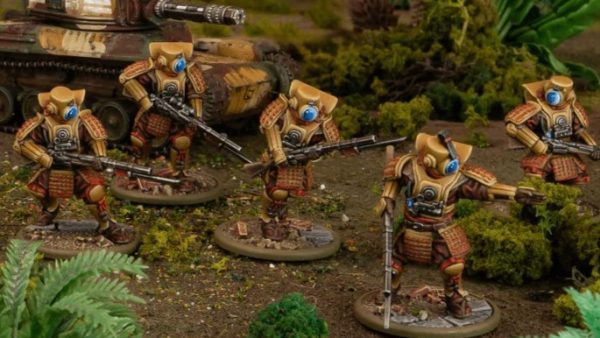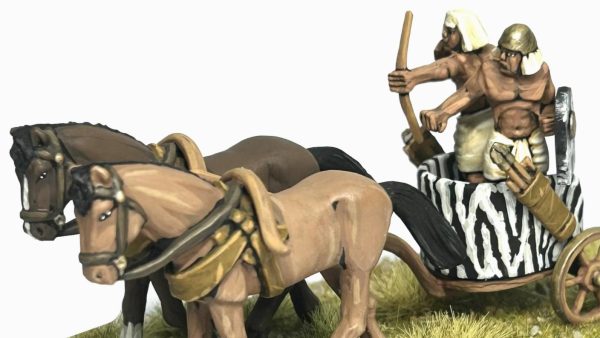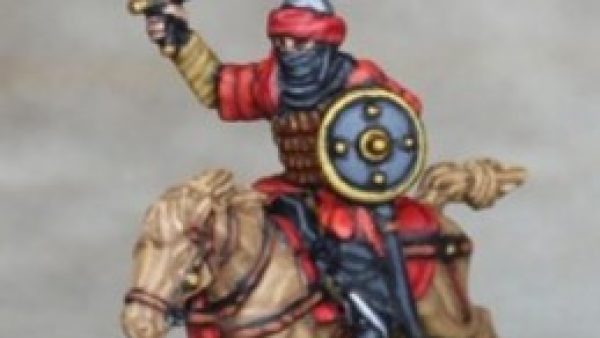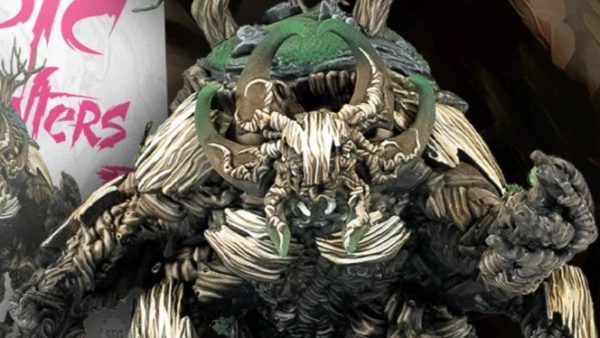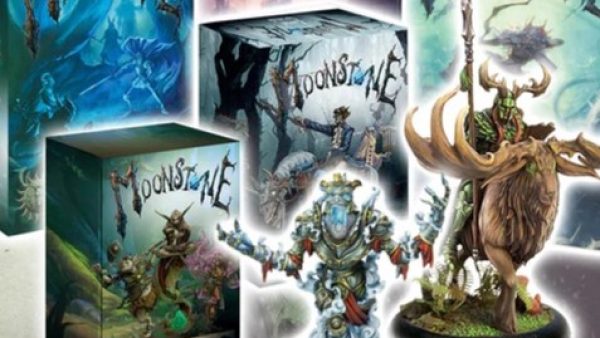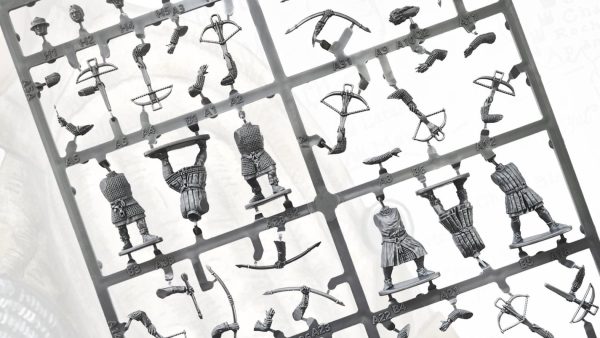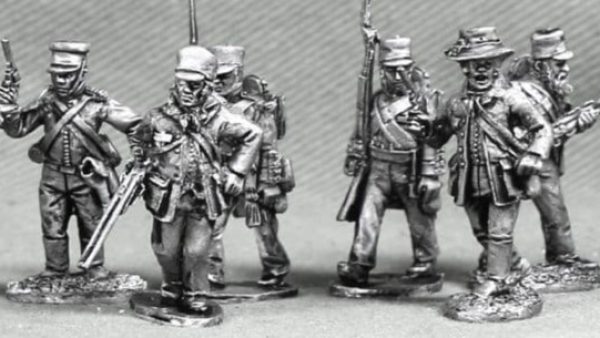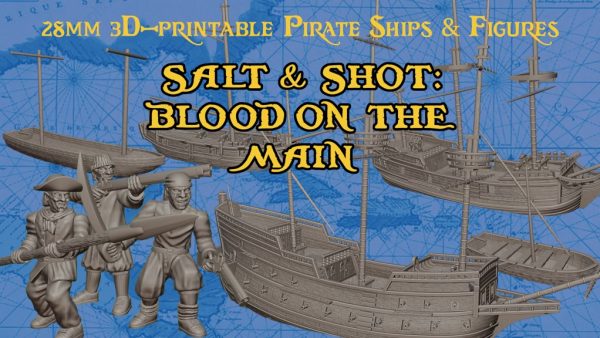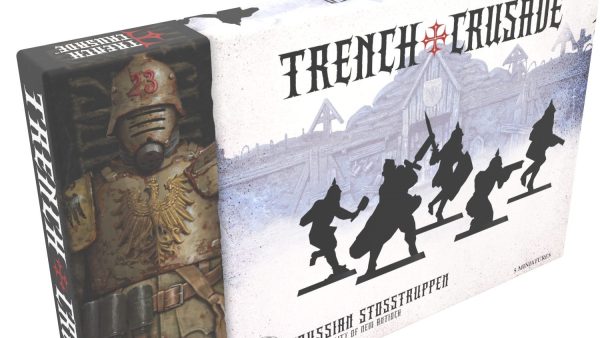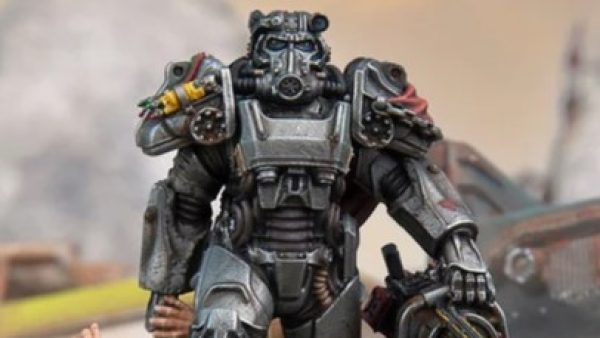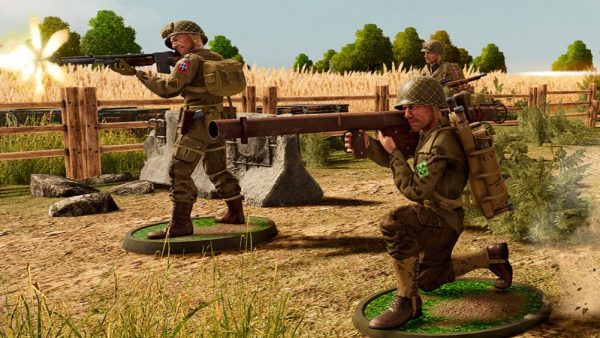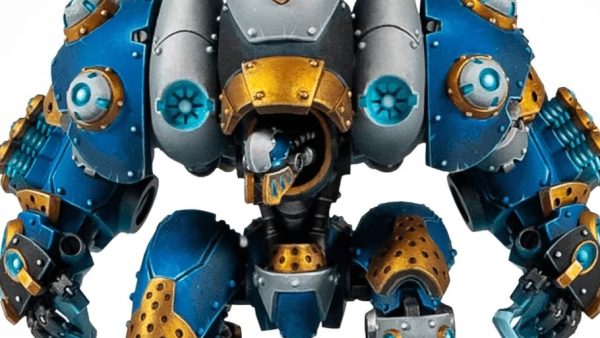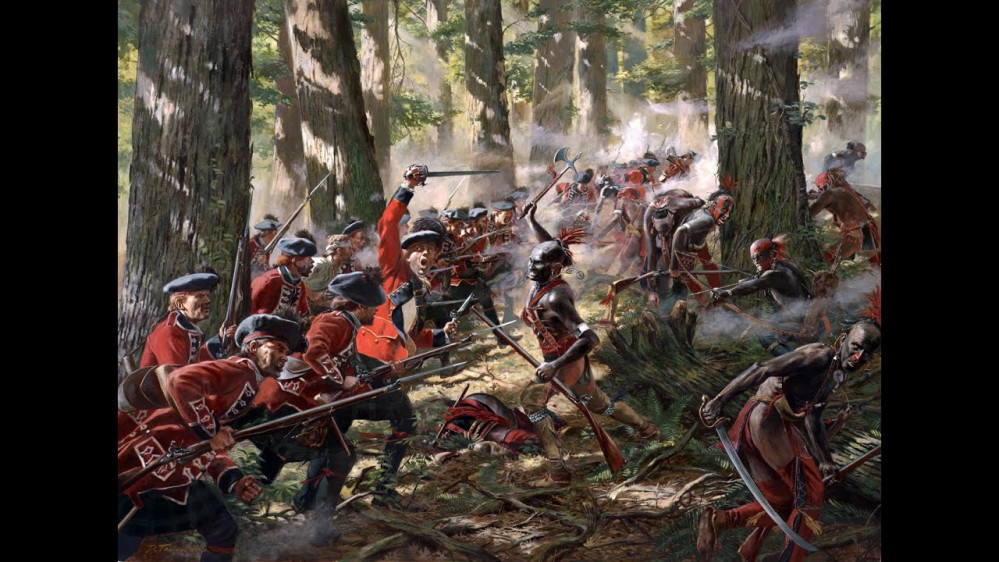
A Gentleman’s (or Woman’s) Guide to Recreating the Engagements that Took Place in North America During the French and Indian War with Special Attention Given to those Small Skirmishes Well Suited for 28mm Tabletops
Recommendations: 67
About the Project
A few years ago I wrote some articles about Muskets and Tomahawks and with the new edition I thought I would update it for the new edition. For those who aren’t familiar Muskets and Tomahawks is a Black Powder era skirmish game designed by Studio Tomahawk who are the same company behind SAGA.
Related Game: Muskets & Tomahawks
Related Company: Studio Tomahawk
Related Genre: Historical
This Project is Active
Writing a List and Unit Types
Welcome back to the article series exploring the new edition of Muskets and Tomahawks. In this article we’ll look at how to write a list and the different unit types.
Now that we’ve looked at how to play the game and what sort of scenarios you can expect to be playing it’s time to look at what our forces are going to look like. There are two levels of game under 500 points and over 500 points which effect the scenarios and certain special rules but won’t effect any of our list building today.
At the time of writing there are currently only three periods available all in the expansion ‘Redcoats and Tomahawks’, the French and Indian War, the American Revolution and the War of 1812.
The first thing your force needs are at least 10 troops of the same type and an officer of to lead them. For example you could take 8 British Regulars and 8 British Grenadiers with a Regular Officer, even though they are different units they all share the same designation as ‘Regulars”. This is essentially the only rule that you need to follow when building a list, one officer per ten men of that unit designation and you have to remain within ally limits.
One important thing to remember is that if more than half of a force, in miniatures, is composed of a single troop type then the force is considered to be that troop type. For example a force of 24 British Redcoats with 23 Rangers accompanying them would be considered a specialised Regular Force, If the force had another one Ranger then it would be considered a Mixed Force and if it had two extra Rangers it would be considered a specialised Irregular Force.
Specialised forces roll differently to determine the scenarios they play and all the officers of the specialised troop type gain a slight special rule to reward players for taking themed forces. For example Irregular Officers have a chance to let their men move after firing or Provincial Officers give their men better moral boosts when they’re nearby.
If you’ve written lists for other tabletop games before then you’ll be familiar with how it works, units have a minimum and maximum size, a cost per man and various upgrades. For example Regulars generally cost ten points per man and a unit size of between eight and twelve. Different forces are also restricted to units based on their period, for example Cavalry is basically non-existent in the French Indian War, German Mercenaries can only be taken in the American Revolution and more elite American troops can’t be taken until the War of 1812.
As a general rule playing a game in this period in North America without any sort of Irregular skirmishers is asking for trouble and a full force of Regulars will find themselves outmaneuvered and sniped from the trees. On the other hand while a full force of Irregulars is both historically accurate and perfectly playable you will find yourself struggling to deal with lines of Regulars, sure you can snipe a few but sooner or later you need to deal with them in order to complete your objectives.
Now we’ve talked about putting together a list let’s talk about what that all means.
Regulars- Regulars are your basic Red, White and Blue coated line troops of this period, there are also two elite forms of Regulars called Grenadiers, who are tougher and more suited to melee, and Light Infantry, who are skirmishers that keep the moral and training of a Regular while having some of the shooting abilities of an Irregular.
Irregulars- Irregular troops are just that, from frontier woodsmen with Kentucky long rifles to Robert Rogers personally trained elite Rangers and everything in between. These troops generally have access to upgrades like Rifles or special rules that make them better in their role with rules like moving through terrain or re-rolling failed hits. The most famous examples of Irregular troops are Roger’s Rangers, Coureur des Bois, British Green Jackets and American Revolutionary Riflemen.
Provincials: Provincial troops represent the less well trained line troops of this period. These units are essentially Regulars without the training, they can still form lines and volley fire they just can’t do it as well as the Regulars can. Examples of these sorts of units are American Provincials in the French and Indian War, American Continental Infantry and Canadian Militia in the War of 1812.
Then of course you have the basic Cavalry, Artillery and Indian troops which are self explanatory.
There we are the end of the articles for now. If anyone wants to know more please let me know in the comments and I’ll happily answer them. I’ll expand on this series as more expansion books come out. I have multiple forces for all the major sets of conflicts proposed like the Mahdists v British for Colonial Warfare, American Civil War and of course Napoleonics so now I just need the books.
The Scenarios
Welcome back to the article series exploring the new edition of Muskets and Tomahawks. In this article we’ll look at scenarios, objectives and Random Events/Side Plots.
There are three universal scenarios in the main rulebook that can be used for any time period, all of them are classic, basic games that we’re all used to, Seizing objectives, steal the loot and exit the board.
What really adds flavour to the game is the expansion books which contain tailored scenarios for that period. The only supplement published so far is Redcoats and Tomahawks but future releases will follow the same style.
Examples of the specialised scenarios in the expansion are Massacre, a scenario about a raiding force killing civilians. Raid, a scenario about destroying buildings. Capture, a scenario about capturing buildings. Exploration, a scenario about tagging the table edge and retreating. Battle, the basic kill points scenario.
In the same style as the last edition both players don’t play the same game. Depending on what type of force you have you roll a number of dice which determines what type of mission you’re more likely to play. For example a force of Indians rolls four d10’s and picks the highest while a force of Militia rolls three d10’s and picks the lowest. As you might be able to deduce higher rolls are more likely to be attacking scenarios and lower rolls are more likely to be defending scenarios.
A common example might be a force of Indians and Canadians coming into the Virginia backwoods to destroy a settlement while the local Provincials are more concerned with evacuating the locals than saving their homes. Another example could be the same group of Indians and Canadians merely trying to scout the area meanwhile the Provincials have to keep the settlement protected and not allow it to be burned down.
 "Right so we just burned down the village sir" "What! We were supposed to save the village" "Sorry Sir we must have got our missions mixed up"
"Right so we just burned down the village sir" "What! We were supposed to save the village" "Sorry Sir we must have got our missions mixed up"I really like this method of playing games, so many times we assume that both sides are after the same goal, the loot or kills or reconnaissance. In reality your troops have wildly different priorities depending on whether the Marquis de Montcalm has sent an elite force of Irregulars to scout an area or Major Washington has sent some hungry Virginian Provincials to guard the frontier against the constant raids by Canadians and their Indian allies. If these two forces met the French Irregulars could care less about burning a few log cabins meanwhile why would these Virginians getting paid less that dock labourers want to risk their lives opposing the French when they can sit tight and keep them from doing any actual damage?
It might not be as balanced as some people would like but I really wish other games would include this amazing way of playing basic pick up games. As you can imagine it would be easy enough to run a basic series of linked games, first they scout the village then they come to burn it down then beat a hasty retreat back home the only question is what will your opponents missions be?
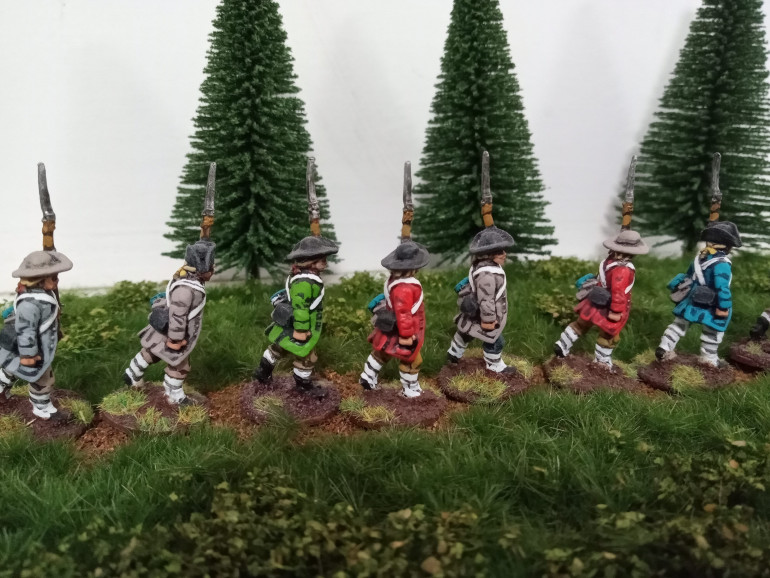 The beauty of civilians in military service is that these minis from Perry Miniatures can be anything from Militia in North America to Vendee Rebels with no changes necessary, the Civilians tend to not change the Pattern of Shoe or Jacket as often as the Military does.
The beauty of civilians in military service is that these minis from Perry Miniatures can be anything from Militia in North America to Vendee Rebels with no changes necessary, the Civilians tend to not change the Pattern of Shoe or Jacket as often as the Military does.Speaking of missions my absolute favourite thing about Muskets and Tomahawks (and if you’ve read my comments on OTT I do mention this a lot) are the Side Plots. Every game should have side plots, 40K, AoS, Flames of War, Bolt Action, Monopoly all of them need some good side plots.
While most other games include the obligatory “don’t be a jerk” passage somewhere in them Muskets and Tomahawks has a tongue in cheek unofficial rule about teasing people who don’t choose a side plot encouraging other players to get them to serve the drinks and snacks to the ‘proper gentlemen’.
Essentially Side Plots are just that, side missions mostly undertaken by the force commander which do things like help break ties, mitigate losses or make victories that much more satisfying. It gets even better though because if you choose to roll for a side plot then you randomly get one of ten Gifts which are once a game special actions that make your Commander that much more superior to those lesser men who choose to play games without Side Plots.
Side Plots are included in the main rule book, rather than rolling two d6 as in the last edition now you roll a d10 which determines your table and another d10 that determines your actual side plot.
Some examples include; your officer being drunk, not wanting to get a new uniform dirty, having a brilliant Commander who has to die, not being the first to initiate hostilities, not having any units rout, battlefield negotiations, your Commander being an old man, passing a letter to an enemy officer in the middle of a battle, being friends with the enemy leader and not wanting him killed, despising the enemy leader and wanting him killed and one of my favourites ‘A Good Day to Die’ which involves your Commander getting killed in melee combat.
As you can see a simple side plot can change an entire game. Suddenly your raid to murder civilians is hamstrung by orders not to initiate the combat or having the enemy Commander in your sights and not taking the shot for the sake of an old friend, something I doubt many people would do in any normal game.
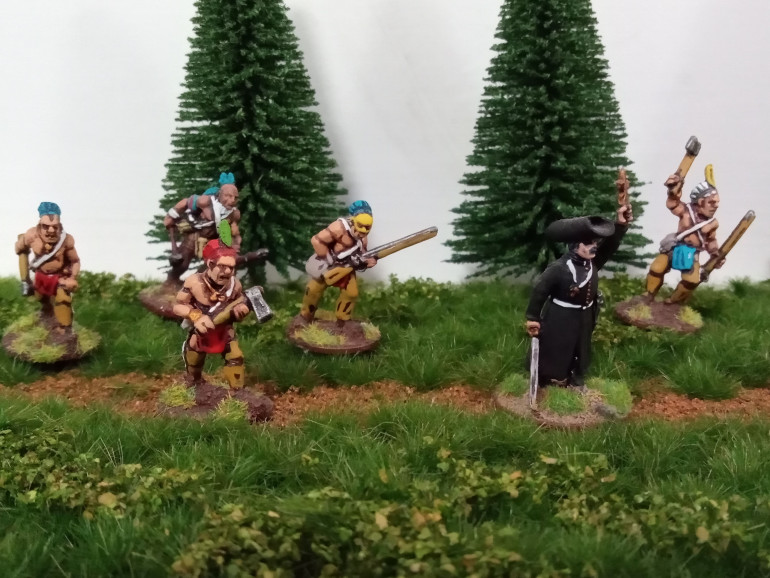 If you want variety then the French Indian War has it. I doubt Father's superiours would appreciate his actions very much! Indians ran the spectrum from Cannibals to Catholics, The Militaries of the world employed Light Troops like the Rogers Rangers along with elite troops like Grenadiers and Highlanders.
If you want variety then the French Indian War has it. I doubt Father's superiours would appreciate his actions very much! Indians ran the spectrum from Cannibals to Catholics, The Militaries of the world employed Light Troops like the Rogers Rangers along with elite troops like Grenadiers and Highlanders.This is what makes me love this game, even the casual ‘pick up’ game has so much story built into it. You really feel like you’re in the boots of a Provincial Officer struggling to keep his men fighting long enough for the civilians to get away or a French Canadian sent to scout out the enemies positions while dodging British Regulars and trying to get the local Chief to join your side in the middle of a skirmish.
Lastly we’ll take a look at the Random Events. Random events are now less common relying on one of three clock cards to be dealt before the other two or else they have no effect but we won’t worry about that all you need to know is that they’re rare but they happen. Specifically tailored random events can be found in the Supplement Books. Effects can range from the weather changing, a new officer coming forward, units testing moral, units getting buffs and my personal favourite the ornery old farmer who takes pot shots at whoever comes near his house.
Thanks for reading the second article on the 2nd Edition of Muskets and Tomahawks hopefully you’ll now have a better of how scenarios are played and how the game adds narrative elements without needing to spend half an hour writing up a backstory.
The Basics
The game is set out with a core rulebook covering the basic rules of the game and expansions that provide the players with army lists, scenarios and other colourful touches that add a period feel to the game. At the moment there is only a single expansion, Muskets and Redcoats, which covers the French and Indian War, The American Revolution and the War of 1812 which were all in the first edition of the game. Also included in the rulebook are pictures of Napoleonics, Indian Mutiny, American Civil War, Zulu Wars, Mahdist War, The Opium Wars and The Northwest Frontier to give everyone a taste of what is to come.
In this article we’ll take a look at the basic mechanics of the game, in the next we’ll look at how to set up and play a game and in the final article we’ll look at how to build a list for your games and take a look at all the different types of units.
After the players have built their lists they select the cards they will need, if you are playing as the British and have Regulars, Indians and Irregulars in your force then you will place the British Regulars, Indians and Irregulars cards into the shared deck. After both players have put their cards into the shared deck some extra cards are added (we’ll get to them later) the deck is shuffled and each player is dealt three cards.
The game is card driven and rather than having turns the players alternate playing a card from their hand. For example the British player plays a British Regulars card which means all of their Regular units get to take as many actions as the cards allows them, generally one or two.
A new addition to the game are Command Points which are mostly earned by playing the oppositions cards, for example our British player deals a French Regulars card. This means all of the French Regular troops get to take as many actions as the card allows. However since the player played a card belonging to their opponent they get a command point.
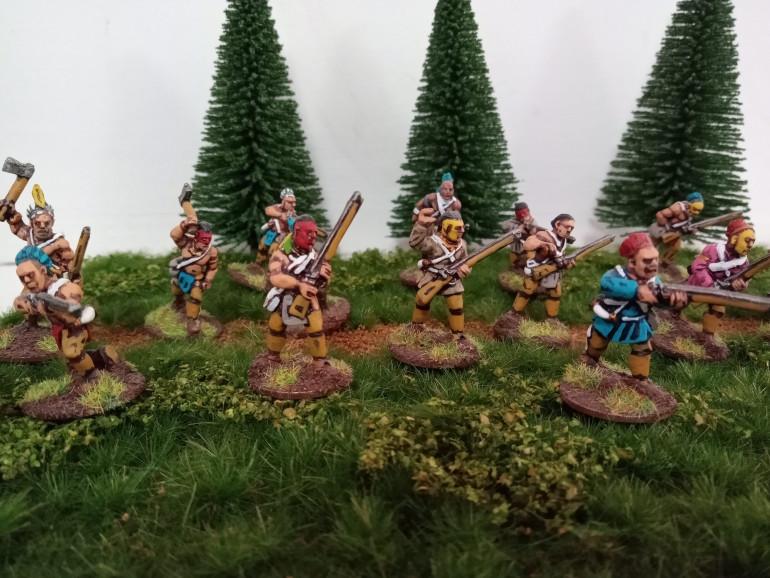 This Period has something for every painter from drab Rangers to colourful Indians. From Uniforms to Civilian Clothing. All figures in this article are from my own collection.
This Period has something for every painter from drab Rangers to colourful Indians. From Uniforms to Civilian Clothing. All figures in this article are from my own collection.That’s how units get the chance to activate but what type of activation’s can they do? Of course there are the basics, moving, shooting, charging but there are also two new actions.
Vigilance for example lets a unit take up an over watch position meaning they ‘bank’ their shooting activation for later in the turn.
Reloading is pretty straightforward it allows the player to reload their troops however it is worth mentioning since the shooting itself has changed. In the new edition rather than the entire unit firing at once and getting a reload marker now half the unit can fire and not get a reload marker.
Speaking of shooting before a unit can shoot at another unit it first has to spot them. Spotting is not a new concept for Muskets and Tomahawks but it was a largely ignored rule due to how complicated it was and how pointless it often was. In the new edition the spotting chart has all been merged into a single easy to read chart. All units can be seen in the open from 96 inches away however things like terrain, enemy unit type and the weather can make it harder to see the enemy while things like whether or not the enemy has fired or what type of troops the spotting unit is make it easier to see.
For example a unit of British Regular are 20 inches away from a unit of Indians in a dense wood. They can normally see them from 96 inches away in the open but have to reduce that distance by three columns due to dense terrain making the spotting range 24 inches however this isn’t the end as the Indians are classified as ‘Natives’ and add another penalty to the spotting column making the spotting range 18 inches meaning the British Regulars cannot fire at them since they can’t see them.
Another new addition is the dice, instead of being the normal d6 Muskets and Tomahawks has changed to a d10 system with the lowest result being a 0 and the highest being a 9.
Shooting penalties effect your ability to hit such as range, cover, formation and type of unit shooting. Before firing select as how many figures will shoot and pick up that many dice, then check the unit can spot their target, check the range of their weapons and only then can you roll the dice. Every unit has a shoot value which you have to roll higher than to score a hit, this value can be modified up or down depending on terrain and range. After hitting the player then rolls against the strength value of the weapon and every roll that scores higher than this value causes a casualty.
As you might expect having your friends shot around you can get on your nerves. After a unit takes any casualties, is hit at least three times or is targeted by volley fire the controlling player rolls on a chart, applying modifiers like nearby officers, unit formation, number of figures killed and more. Different unit types have different charts, Regulars will be much more likely to stick around than basic Militia who in turn are more reliable than raw civilians.
Close combat is essentially the melee version of shooting and not worth it’s own explanation here.
We mentioned Command Points earlier in the article so let’s finish by taking a deeper look at them. As mentioned earlier the most common way to earn Command points is to play your opponents troop cards, the other ways are too specific to mention here. A player has a limit of 10 Command points at any time. Let’s take a look at the abilities you can use with Command points.
Hark: Put a unit on Vigilance/Over watch.
Hold Back: Take a card in your hand, place it face down and use it at any time.
Stand Fast: Automatically Rally a fleeing unit.
Order: Take an action with a unit of your choice, the cost depends on how large the unit is.
Preparation: Take a card from the discard pile and return it to your hand.
Thanks for reading the first article on the 2nd Edition of Muskets and Tomahawks hopefully you’ll now have a better grasp of how the rules work, the style of the game and any changes since the first edition you might be familiar with.
Explaining the Project
Many years ago I wrote some articles for the site but with a new edition they need an update, I sent them in but haven’t heard back for a few months so I’ll just put them here.
So What is the French and India War?
The French and Indian War is the name given to the part of the Seven years War fought in North America but is often regarded as an entirely separate and independent war.
Both Britain and France have found themselves in possession of sizable colonies in North America by the mid 18th Century. The French owning much of what is now Canada while the British owning a sizable chunk of the East Coast from New England down to Georgia and as far inland as the Allegheny Mountains.
Both also has a secondary colony, the British owning most of the land around Hudson Bay called “Rupert’s Land” after the cousin of the King and was mostly operated by the Hudson Bay Company.
The French had a Territory they called Louisiana named after the French King Louis the XIV. The Territory claimed was much larger than that which was actually occupied at any one time by the French. It ran from roughly Modern day Mobile Alabama to the Canadian Border but in all respects ended near the Forks of the Ohio River.
Both sides needed this vital avenue to any further expansion into the continent. If the French are able to properly link and populate their two colonies then they have almost unlimited Westward expansion potential while the British would be stuck bottled up on the East Coast. It all hinged on the Forks of the Ohio River
If the British can force a way through the Ohio they can access the rich interior of North America. Both sides are playing for the future, neither has enough population to properly settle the lands they currently occupy but both know that if they want to become the dominant power on the Continent they need at least access to the interior.
Ironically neither of the two parties would get what they desired.
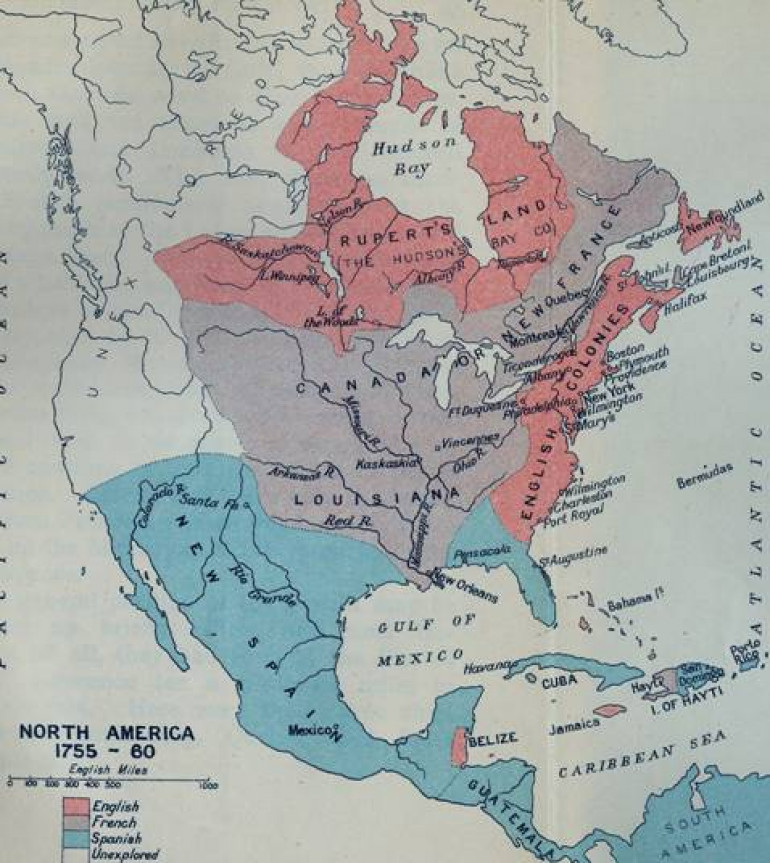 A Very Basic Map of North America, note Louisiana is shown far bigger than it actually was. Owning a lot of land on paper and being able to control it are far different things. Lousianna would later be sold by France (with funds managed by British Bankers) to the Americans to fund an invasion of Britain.
A Very Basic Map of North America, note Louisiana is shown far bigger than it actually was. Owning a lot of land on paper and being able to control it are far different things. Lousianna would later be sold by France (with funds managed by British Bankers) to the Americans to fund an invasion of Britain.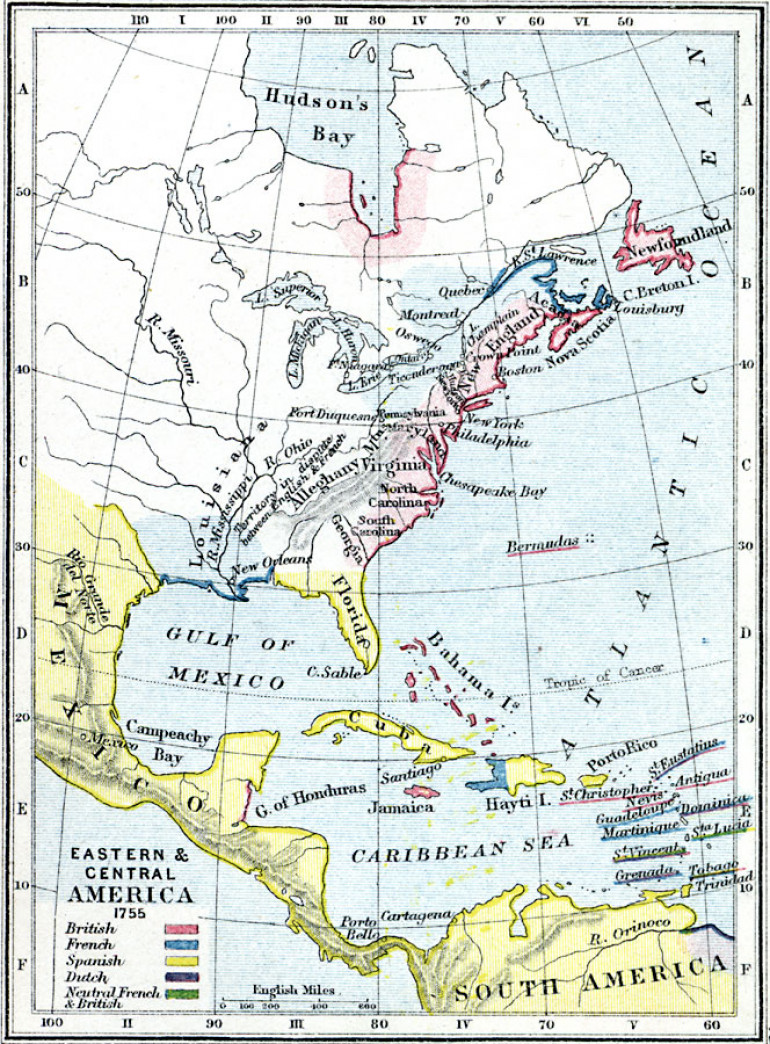 A More Accurate Map of the Continent that shows how Precious the Forks of the Ohio were to the Two Major Powers of the 18th Century
A More Accurate Map of the Continent that shows how Precious the Forks of the Ohio were to the Two Major Powers of the 18th CenturyFrance and Britain had been at each others throats for centuries but now it was even more organised. Modern Armies using Firearms and Modern Tactics had finally emerged after the Mercenaries and Ad-Hock nature of the Earlier Centuries.
By 1755 the British had fought a whole load of Civil Wars with the Catholic Jacobite’s, the War of Spanish Succession, the War of the Quadruple Alliance and the War of Austrian Succession added in for good measure.
The French had fought in the same wars and more and both sides were slowly amassing global Empire’s but neither was ready to be a true Superpower, everywhere Britain went France would follow, constantly striving to fight one another for territory everywhere from the West Indies to Canada.
The two nations had come to blows in the past few decades but no major territories had been gained or lost. The French supported the Jacobite Exiled Stuart Kings and had attempted to invade Britain during the 45 Jacobite Rebellion but the plans were foiled, the Rebellion was put down and the German invader was allowed to stay on the Throne .
One Character from the Jacobite 45 who would have a great impact on the French and Indian War was Prince William the Duke of Cumberland who had defeated the Jacobite army at the Battle of Culloden. He had a promising officer who served with him and remained relatively unknown until he was given command of an expedition that we will be looking at very soon, General Edward Braddock.
Along with General Braddock Prince William sent the Earl of Loudoun to North America and encouraged him to adopt Light infantry tactics along with smaller sized scouting expeditions.
The French also had Generals from prior wars such as the now famous Marquis de Montcalm who earned a name for himself as a fighting man having been wounded multiple times by both saber and musket ball as well as taking join command of an army in Italy.
Long story short (drink Jim) The Virginian’s have a very valuable land claim in Ohio which the French object to, the French have a garrisoned Fort in the area and the entire situation was a powder keg.
Enter stage one Major George Washington of the Virginia Militia (and who had quite a nice stake in the future land gained by westward expansion). Washington linked up with an Indian named ‘The Half King’ and went out on a mission to evaluate the situation. Then everything went horribly wrong.
Washington came across a French party led by Jumonville and accidently although not really that accidently started what some people have called World War Zero although i think that’s hyperbolic, inaccurate and silly.





























